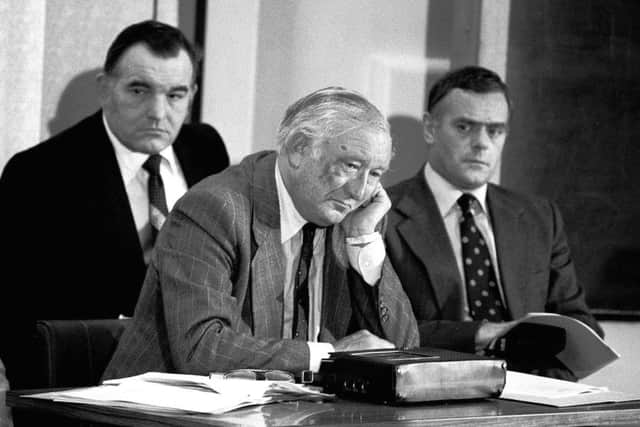Ripper in new probe over 17 unsolved attacks in Yorkshire


The Sun said the victims, all of whom survived, sustained injuries similar to those inflicted by Sutcliffe on his 20 known victims.
The Bradford lorry driver was jailed in 1981 for 13 murders and seven attempted murders during a six-year period in which West Yorkshire was convulsed with fear.
Advertisement
Hide AdAdvertisement
Hide AdWest Yorkshire Police declined to comment on today’s report, which said some of the unsolved cases involved the use of the same kind of hammer carried by Sutcliffe.


Most of the victims have been linked with Sutcliffe repeatedly since his arrest, but the 70 year-old killer, who now uses the name Peter Coonan, has always denied responsibility.
The new round of questioning in what West Yorkshire Police is calling an “ongoing investigation”, was said to have been conducted at Frankland Prison in Durham, to which Sutcliffe was moved last summer after a ruling that he no longer needed to be housed in a secure hospital.
The Sun said the cases included that of Tracy Browne who, at 14, was hit with a hammer in Silsden, near Keighley, in August 1975, two months before Sutcliffe claimed his first murder victim, 28 year-old Wilma McCann, in Leeds.
Advertisement
Hide AdAdvertisement
Hide AdPolice are also said to be investigating the cases of Gloria Wood, 28, in Bradford, a year earlier, and Yvonne Mysliwiec, who was a local newspaper reporter in Ilkley when she was attacked in a similar manner.


Other unsolved attacks from the period include those of shop assistant Rosemary Stead, 18, Bradford resident Maureen Hogan, both in 1976, and student Ann Rooney, 22, on the outskirts of Leeds, in 1979.
An inquiry into the Ripper case by the former inspector of constabulary, Sir Lawrence Byford, was published in 1982 but only made public in 2006. It concluded Sutcliffe that could have been responsible for 13 more offences.
The report said there was an “unexplained lull” in his criminal activities between 1969, when he first came to the police’s attention, and the first officially recognised Ripper assault in 1975.
Advertisement
Hide AdAdvertisement
Hide AdSir Lawrence wrote: “We feel it is highly improbable that the crimes in respect of which Sutcliffe has been charged and convicted are the only ones attributable to him.
“This feeling is reinforced by examining the details of a number of assaults on women since 1969 which, in some ways, clearly fall into the established pattern of Sutcliffe’s overall modus-operandi.”
Last year, West Yorkshire Police said officers had visited a small number of people named in the Byford Report.
In a statement, police said: “The report, when published in the early 1980s, listed 13 offences.
Advertisement
Hide AdAdvertisement
Hide Ad“These offences form part of the historic cases that continue to be reviewed by West Yorkshire Police.
“Officers did take updated statements from them and those statements from part of the review process which is ongoing.
“West Yorkshire Police continue to keep an open and objective mind on all these investigations.”
In a later statement, the force added: “West Yorkshire Police are continuing with an ongoing process to review non-recent undetected offences in line with national guidance around the handling of information and in conjunction with the Home Office under the requirements of the Public Records Act.”